A babushka with a rubber stamp can be scarier than a masked man with a gun, says reporter Noah Sneider, who's had to negotiate with both in recent weeks.
Sneider, a 2009 graduate of Palo Alto High School, has been splitting his year between Moscow, where he took part in the media manhunt for Edward Snowden, and Ukraine, where he's been helping The New York Times, Al Jazeera and Eurasianet.org cover one of the world's most explosive and complex hot zones.
Sneider, who now is in Moscow trying to navigate Russia's labyrinthine visa bureaucracy so he can continue his work, landed on the front line of the new Cold War almost by accident. Though journalism is almost literally in his blood -- his mother, Elisabeth Rubinfien, wrote for the Wall Street Journal and his father, Daniel Sneider, was the Moscow bureau chief for the Christian Science Monitor before both became editors at the San Jose Mercury News -- he wasn't planning to spend his year talking his way through checkpoints or following a caravan of Russian corpses across the Ukrainian border.
But after graduating from Pomona College last summer, he knew he wanted to head to Russia.
His reasons had little to do with bylines or current events. Sneider was born in Moscow and spent the first three years of his life there before moving to Palo Alto. Though he was too young to remember anything about Russia, the country continued to fascinate him as he went through school in Palo Alto. At Pomona College, he concentrated on Russian and Eastern European studies, and the prospect of riding the Transiberian railroad and wandering around with a backpack sounded appealing, he said.
"I can't say I had a great plan," Sneider said. "It was an obscure decision. It's not like I was chasing the headlines. It wasn't a career move. Just like I wanted to major in Russian, I wanted to move to Russia. I didn't have a great idea of how I'd make it work."
His origins aside, Sneider said he was fascinated by Russia's rich history and inherent complexity. It's a place full of surprises, as Winston Churchill famously observed in 1939 when he called it a "riddle, wrapped in a mystery, inside an enigma." Nothing about the country is shallow, Sneider said.
"It's a place where everything that happens is fraught with layers of historical and cultural meaning," Sneider said.
It also presents a stark contrast to life in the Silicon Valley, where governments generally work, laws are usually followed and routine actions tend to lead to predictable outcomes. For these reasons, people here can easily spend much of their time on "autopilot," he said.
In Russia, you can do the exact same thing three times and get three different results, with success often contingent on the whims of the person with whom you're dealing. This doesn't always make life simple, but from Sneider's perspective, it makes things interesting. Curious, gregarious and happily afflicted with wanderlust, Sneider speaks with fondness of a world in which an everyday interaction inevitably "spawns extra steps you have to go through that introduce you to new people, new parts of the city, new things."
"It's kind of exciting, in a way," Sneider said. "Things largely happen according to human relationships more than according to rules of laws and institutions and regulations."
---------------------------------------
Sneider arrived in Moscow in June 2013. The prior winter, as he was contemplating his future, he had applied for an internship at The New York Times. Just before graduation, he was surprised to get a letter from the Times inviting him to intern in the newspaper's Moscow bureau.
Sneider was thin on journalistic experience. While at Paly he co-founded an award-winning sports magazine, The Viking, a venture that he called his "defining high school experience." In college, he dabbled in journalism in his freshman year before shifting focus to art, photography and Russia studies. But what he lacked in front-line reporting chops, he more than made up for in chutzpa and timing. The day after Sneider arrived, Moscow received a visit from another young American citizen -- former National Security Agency contractor Edward Snowden, who had just fled to Russia from Hong Kong after releasing a treasure trove of classified documents exposing the agency's surveillance tactics, including its collection of "metadata" on American citizens. On June 23, just as Sneider was settling in, Snowden landed, launching a media frenzy and restoring Russia to the international headlines.
Sneider's first few days on the job were devoted to the chaotic search for Snowden. About half of the Times bureau was going to the Moscow airport, with some reporters spending their nights there, he said. As a rookie, his own role was limited, consisting in large part of observing and learning.
"I was so green at that point, I didn't think they really trusted me to do anything other than stand and watch and not bother people," Sneider said.
As the internship progressed, his responsibilities expanded, much like Russia's presence on the Western evening news. In June 2013, the nation passed a law that banned "propaganda of nontraditional sexual relationship to minors" -- a prohibition that was widely condemned by many in the international community as a veiled attempt to repress and persecute gay people. At the same time, Russia was preparing to host the Winter Olympics in Sochi, an extravagant $50 billion spectacle that was supposed to mark Russia's resurgence and the Kremlin's return to the international stage.
Sneider wrote an occasional news brief and assisted with the Times coverage of Moscow's mayoral race, but his first major byline for the Times came in October, when he wrote a story about "Open Games," an Olympics-style competition staged by Russia's gay community and set to take place just after the Sochi Olympics. This events, like so many others, fell into Russia's legal gray area. Though the new law created an atmosphere of fear in the gay community, it did not lead to widespread prosecutions, as many had feared.
As Sneider wrote in his Oct. 26 story, the existence of an athletic federation focusing on LGBT (lesbian, gay, bisexual and transgender) issues "reflects a tacit agreement with Mr. Putin's government that extends beyond gay issues: all's well that does not end in politics."
"Such legal gray areas abound in Russia, where the authorities often treat law enforcement as a matter of caprice rather than one of compliance," he wrote.
Around that time, Sneider also teamed up with a group of Times writers for a project on Moscow's LGBT life, in which gay residents were asked to submit first-person stories. Respondents included a girl who fell in love with her Russian teacher; a Muslim male from the Caucasus who entered into a "fake marriage" with a lesbian girl; and a lawyer for an LGBT organization who was pelted with eggs and ignored by the police after she represented in court a victim of an attack at a gay-rights rally.
By late fall, the bylines and stories were adding up for Sneider, but finances were another matter. The internship was unpaid, Sneider said, and he had burned through his savings and was thinking of how he'd make a living. He took on a job at the Higher School of Economics, a university in Moscow, where he helped edit and teach English. Predictably, he said, the job was "much less exciting than working in the newsroom." During the winter break, Sneider flew back to Palo Alto, where he made a decision that he would scale back his nonjournalism commitments and make freelance writing his full-time occupation.
---------------------------------------
When Sneider returned to Russia in January, he was no longer an intern but a full-time freelancer, pitching and contributing stories to online magazines Eurasia.net and Slate.com. By mid-February, news wasn't hard to find. The fissures between Russia and the West began to widen, with the soul of Ukraine at stake.
The political temperature in the former Soviet republic had rapidly heated up in December, when the nation's embattled and reputedly kleptocratic President Viktor Yanukovych backed away from an association agreement with the European Union and instead signed a deal with Russia that included $15 billion in economic assistance from Russia and gas discounts. For millions of Ukrainians, particularly those in Kiev, Lvov and the western half of the nation, the reversal of alliance signified a high-handed betrayal of their hopes for freedom, economic prosperity and closer ties to the West.
By the middle of February, tensions were peaking in Kiev, with thousands of protesters gathering at Maidan Square to demand Yanukovych's resignation. With tires burning and crowds chanting, Ukraine's riot police opened fire on the protesters, killing more than 70 people between Feb. 18 and 20. The protests continued and within a week Yanukovych abdicated and fled; the riot police, known as Berkut, was disbanded. Despite 100 casualties, protesters were hailing the success of the Maidan revolution.
When Sneider arrived in Moscow, it was clear that Ukraine was where the action was. He took a train to Kharkiv, Ukraine's second largest city.
"I hadn't been to Kiev at all during Maidan, and I was kind of bummed," Sneider said. "I was sitting at desk job in Moscow, which isn't a bad job by any means but nothing close to being in the thick of it."
Kharkiv proved anti-climactically stable (this was months before its mayor was critically wounded by a gun shot while riding his bicycle), so Sneider shifted his focus to Crimea, a peninsula on Ukraine's southern edge that until this year was best known as home to Russia's Black Sea Fleet and a resort destination for party leaders and for literary lions like Leo Tolstoy and Anton Chekhov. He arrived by train in Simferopol, just as masked rebels armed with assault rifles began taking over government buildings. The night after he arrived, Sneider said he walked out of his hotel room and saw armed soldiers roaming the streets. A ring of more armed men guarded parliamentary buildings.
Events unfolded at a dizzying speed over the next two weeks as Russian separatists took over Ukrainian posts; harassed and assaulted Maidan sympathizers; overran local TV stations and replaced Ukrainian news with Kremlin propaganda; and organized a referendum in which 97 percent of the Crimean voters supposedly voted to join Russia.
On March 18, the Russian parliament signed a law officially annexing Crimea and prompting analysts all over the world to talk about a new Cold War. But in the early days of March, Sneider said, Crimea was just starting to rumble.
"I don't think anyone expected what was about to actually happen," Sneider said. "I don't think anyone predicted the totally bizarre way that Russia seized it."
The men bore no insignia, and when Sneider tried to talk to them, he found that they were "not very talkative." There were, however, masses of pro-Russia residents who had come to support the separatists and who Sneider said were eager to have their voices heard.
Sneider reached out to his Times colleagues in Moscow to ask them if they needed help covering the Crimean crisis. He was ultimately hired on a day-to-day basis, mostly to assist some of the veteran reports who were now arriving to lead the Times coverage. He also contributed a story about Crimea's Tatars, a Turkic Muslim community whose history is stained by periods of persecution, exile and ethnic cleansing at the hands of Stalin.
The danger extended to journalists. Simferopol, Crimea's capital, was now inundated with foreign press. Sneider heard of cases in which Western and Ukrainian journalists were assaulted, and he learned to be careful, to "be aware of what temperature your interaction is at and to cut it off before it gets to a point where someone would really think of harming you physically."
Things got dicey as Sneider made his way toward Ukrainian military bases and tiny towns filled with Russian soldiers and angry locals who had not dealt with journalists before.
"Journalists have become in conflict effectively combatants in the eyes of the local population," Sneider said. "It's kind of, 'Are you nashi(our people) or are you not?' Representing a Western publication, especially one like The New York Times that has name recognition even for people in Crimea, it's not the best introduction to an interview."
He described the atmosphere in the early days of the Crimean crisis in one of several pieces that ran on Slate.com in the first two weeks of March:
"In Simferopol, Crimea's capital, crumbling pre-revolutionary facades line the streets, lending a quaint air to an otherwise edgy atmosphere. Following the new government's ascension and passage of a series of controversial laws (most notably, a bill that prevented Russian from being an official language), anti-Maidan protesters began amassing. For several days, they have gathered outside the Crimean parliament building, which was occupied by unidentified militants on Thursday. They chant 'Russia, Russia!' and 'Glory to Berkut!,' an unironic inversion of the Maidan slogan, 'Glory to the Heroes!'"
---------------------------------------
Sneider wasn't planning on being a war correspondent, but when opportunity knocks on your door with the butt end of a Kalashnikov and The New York Times asks you for help, you don't say "no."
In Crimea, Sneider got to work with C.J. Chivers, a veteran war correspondent whose coverage of the military conflict in Afghanistan and Pakistan helped the Times win the Pulitzer Prize in 2009. In late March, Sneider returned to Moscow where he worked on a book project, assisted the Times and freelanced as a translator. In mid-April, he received a message from Chivers, with whom he had worked in Crimea.
"What he said was, 'Are you still interested in being a war corespondent?' Which was a really vague message that I didn't know how to respond to," Sneider said.
On April 20, Sneider arrived in Donetsk, a large city in the industrial region of Dombas. This was weeks before armed rebels took over the city's police stations and exactly a month before masked men organized a hasty referendum and proclaimed the People's Republic of Donetsk. What struck Sneider at the time was how normal everything seemed.
"There were a couple of buildings that the rebels had taken over, but other than that, normal life went on," Sneider said. "People were strolling the streets, and buses were running and shops were open. It was late spring, early summer so people were starting to ride bikes.
"You could tell something was brewing, but it hadn't bubbled over yet."
Things were getting hotter in Slovyansk, which was quickly transforming into a secessionist stronghold. It didn't feel like a war, but every now and then there were scattered bursts of violence (the day before he arrived in Slovyansk, three rebel soldiers were killed at a checkpoint). New checkpoints were coming up, but journalists weren't exactly dodging bullets, Sneider said.
"Something would happen at some checkpoint, and everyone would hear about it and go to it, but the battle would be over, and you'd have to sort through the aftermath to figure out how it happened," Sneider said.
In Slovyansk, they had a chance to spend time with the rebels, whose identities remained the subject of worldwide speculation. The West insisted they were Russian provocateurs; Kremlin countered that they were Ukrainians bent on resisting Kiev's fascist government. On May 3, Chivers and Sneider shared a byline on the cover of the Sunday Times for a story titled, "Behind the Masks in Ukraine, Many Faces of Rebellion." The story suggested that neither side in the propaganda war was exactly accurate.
"The rebels of the 12th Company appear to be Ukrainians, but, like many in the region, have deep ties to and affinity for Russia," the story stated. "They are veterans of the Soviet, Ukrainian or Russian Armies, and some have families on the other side of the border. Theirs is a tangled mix of identities and loyalties."
The situation in Slovyansk was becoming increasingly dangerous for visitors from the West. Journalists, activists and soldiers were kidnapped and at times beaten. On April 25, rebel forces kidnapped seven military observers from the Organization of Security and Cooperation in Europe and marched them in front of TV cameras for a sham press conference. Television footage also showed the bloodied and bandaged faces of captured Ukrainian soldiers.
Sneider said Chivers really impressed upon him the need to always be aware of your situation; assess the risk of every situation in a methodical way; and develop habits that would allow you to slip out quickly if you need to. Even so, there were several close calls. The rebels didn't want to give the Times journalistic accreditation. So as they passed through checkpoints, men with guns approached them, pointing guns in the window and asking for documents, and they had to negotiate their way out of trouble.
The closest call, he said, came at a checkpoint in early May. There was heavy fighting that day. New checkpoints were coming up, and people were getting "amped up." Chivers and Sneider were coming back to their hotel late and got stopped at a checkpoint. When the rebels saw American passports, they became belligerent and ordered other guards to take the journalists to the basement of the Security Services building, where prisoners were held. Sneider tried to talk his way out, but it wasn't working.
"I kind of quickly understood early on that it wasn't going to go well and that I needed to do something else to resolve it," Sneider recalled.
He observed that the guards on the checkpoints tend to be pretty low on the seniority ladder, with cheap old hunting rifles and makeshift weapons like bats and sticks. Many weren't wearing camouflage. With that in mind, Sneider quickly called a rebel commander whom he had gotten to know while working on the story about the insurgents' identities earlier in the week. The commander got on the phone with a guard and minutes later, they were released.
He was in Eastern Ukraine until mid-May, staying mostly in Slovyansk but also taking trips to smaller towns and villages. Traveling with a reporter like Chivers, he said, was a perfect way to learn the craft of covering a dangerous situation. The biggest lesson?
"It might be counterintuitive, but not rushing to the things that are happening and moving in when it's clearly safe to do so and beneficial," Sneider said. "In the midst of the hysteria, learning not to get caught up in the rush yourself. Learning to slow yourself down -- that was the biggest lesson for me.
On May 14, after three weeks in the heart of the rebellion, Sneider took a quick trip to Greece to visit a friend and unwind, recharge and "disconnect from everything for a few days."
---------------------------------------
By late May, Sneider was no longer working for the Times. After a few days in Moscow, dealing with the visa bureaucracy, he returned to Ukraine to cover the May 25 presidential election. With the Donbas region caught in the crossfire and the Ukrainian army becoming more aggressive, Sneider joined a group of journalists who trailed a truck full of rebel corpses from Ukraine across the Russian border. The story, which ran on Al Jazeera America, was one of his most ambitious and evocative undertakings yet.
The rebels in the coffins had died the prior week in a battle with government troops at the Donetsk airport. Their bodies, according to the story, were stored in an industrial freezer at a local ice cream factory. Sneider said the rebels were forthright about their reason for allowing Western journalists to tail them: They were afraid the Ukrainian army would bomb them and they wanted human shields, Sneider said. That was fine with the reporters.
"We basically decided as a group that it was an important story and that it was worth seeing it through to the end, to know if they made it back to the border and to see how the checkpoints responded to the truck full of bodies."
Last week, Sneider was back in Moscow, working on getting his journalism visa so he can stay in Russia -- an ordeal that has proven as frustrating as anything he's done since arriving in Eastern Europe last year, he said. He is also working on a more expansive work: a series of reflective essays and scenes called "The Empire Strikes Back" that he is putting together in partnership with the Medium.com and The Big Roundtable. The series, at medium.com/the-empire-strikes-back, is an experiment with a more interactive form of journalism. His pieces include his correspondence with editors and encourage participation from readers. In one June 9 email, he complains about being "stuck in bureaucratic circles of hell" as he tries to collect "7 signatures from surly women in 7 separate offices spread across 2 buildings" and waits "as one discusses something w a friend on the phone."
Meanwhile, the Ukrainian storyline in the wider international press is undergoing a makeover of sorts. The May 25 election was peaceful and by all accounts fair, with chocolate magnate Petro Poroshenko picking 54 percent of the vote and proclaiming that he will bring back peace to the East within "hours, not days." Russia's decision to pull back tens of thousands of troops from the Ukrainian border have prompted some observers to suggest that Putin "blinked" under pressure from Western sanctions. The United States has pledged millions in aid to the Ukrainian government.
Yet after confronting the consequences of war in Ukraine, Sneider isn't feeling so optimistic.
To be sure, the Kremlin propaganda that fueled Crimean euphoria and Eastern Ukrainian angst was based on largely false assertions: The Ukrainian government is dominated by fascists from Right Sector (a far right party whose presidential candidate ended up drawing just 0.7 percent of the vote in the May 25 election). Ethnic Russians in Ukraine are now under threat (a statement that the United Nations dismissed after an investigation found no evidence). Russia had nothing to do with the annexation of Crimea (a statement that Putin later himself contradicted when he acknowledged that Russian soldiers traveled to the peninsula to offer protection). But Sneider has seen the impacts of these false assertions, and he knows they are as real as the body count.
"The people there in Donetsk and Lugansk, they may be misguided in the sense that there's a lot of propaganda and a lot of fables and myths about what's actually happened and the role of fascists and Nazis and new-nationalists, but regardless of that, the feelings of people in the Eastern Ukraine are real. The feeling that they're under threat and under attack by their own government, it gives people an existential reason to stand up. I don't think this will be easy to disperse."
"One of the things that gets missed in the picture coming out of Kiev is that this isn't just some crazy band of terrorists. There's a lot of support from the local population. And the more civilians who die in these clashes and the more local people die in these clashes, the more difficult it becomes to patch this society back together."
Read some of Noah Sneider's recent coverage:
• Open Games' in Moscow to Test an Antigay Law (The New York Times; Oct. 26, 2013)
• Mindful of the Past, Many Tatars Fear a Russian Future ( The New York Times; March 13, 2014)
• In One Eastern city, Ukrainians Find Battle Hits Too Close To Home (The New York Times; May 12, 2014)
• Pro-Russia rebels in Donetsk collect their dead and ask, 'Where's Putin?' (Al Jazeera America; May 30, 2014)

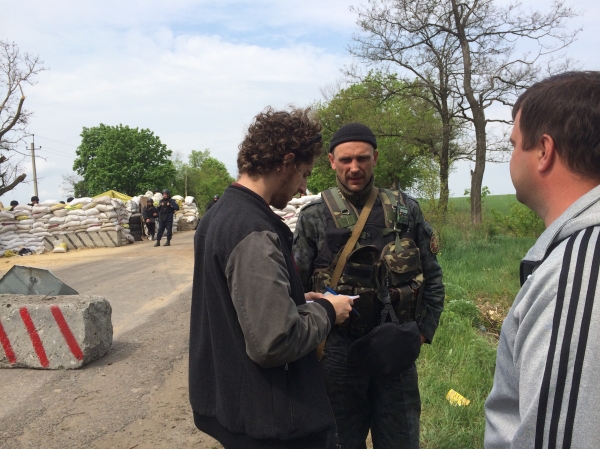
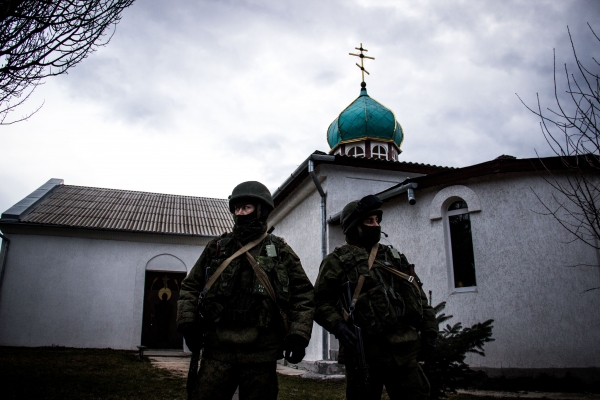
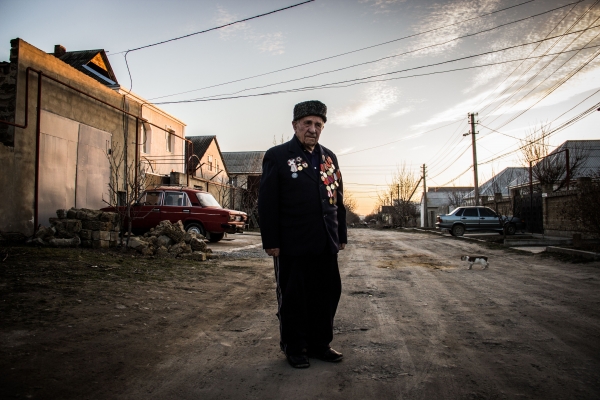
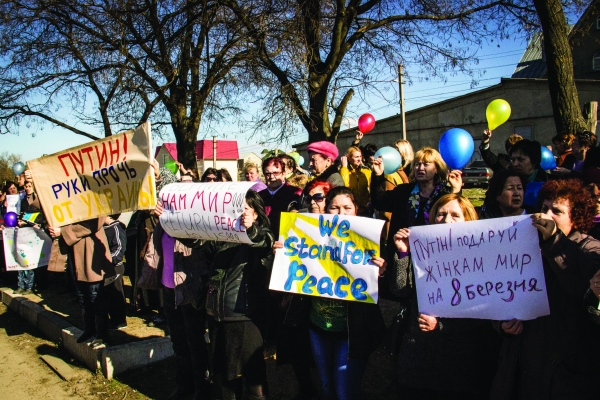
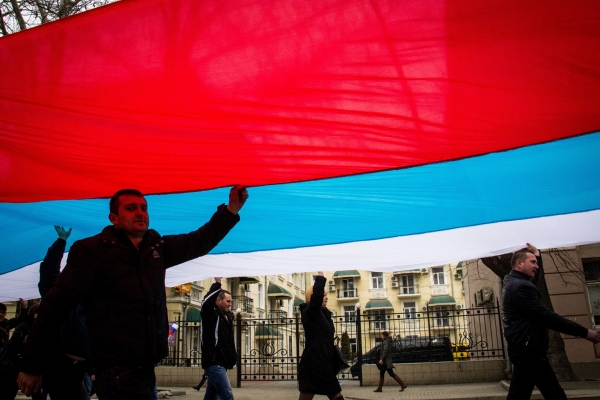


Comments
Palo Verde
on Jul 17, 2014 at 5:27 pm
on Jul 17, 2014 at 5:27 pm
Noah is on CNN right now reporting on the plane crash.